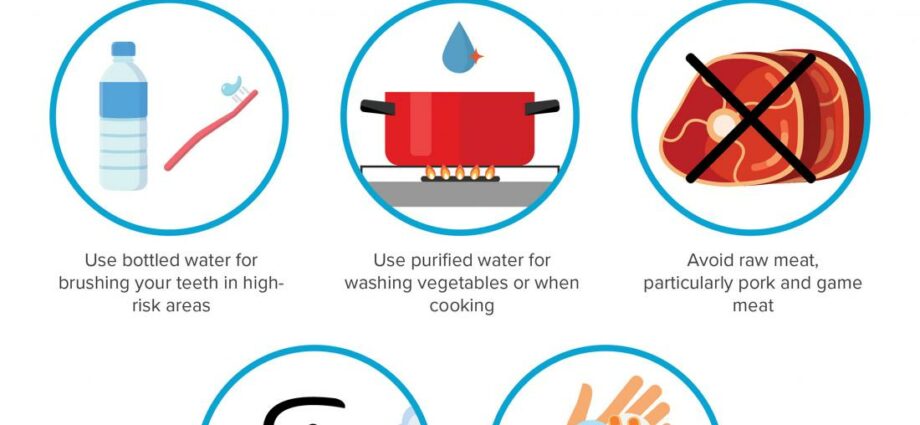Hepatitis E: symptoms, causes and treatment
The origins of hepatitis E
The origins of the hepatitis E virus
The hepatitis E virus (or HEV) belongs to the Hepeviridae family. “Hepatitis E inflammation of the liver, linked to infection by the hepatitis E virus,” explains Professor Jean-Marie Péron, head of the hepatology department at Toulouse University Hospital. The multiplication of the virus in the liver results in the destruction of liver cells. But this organ having the formidable power to regenerate itself, this allows it, most often, to repair on its own the damage caused by the infection.
Figures
According to the World Health Organization, there are 20 million HEV infections each year worldwide. WHO estimates that hepatitis E was responsible for around 44.000 deaths in 2015. Hepatitis E is present worldwide, but it is in East Asia and South Asia that it is most common. .
“In France, around 2000 symptomatic cases are listed each year, with more than 95% of indigenous cases”, underlines ANSES. They were only 9 in 2002. A dramatic increase probably due to better diagnostic tests, and awareness of doctors.
Symptoms of hepatitis E
“In more than 90% of cases, there are no symptoms. The infection then goes completely unnoticed. “When there are symptoms, we often have fatigue, joint pain, possibly muscle pain, sometimes a little fever. Once in two, in the symptomatic forms, jaundice (yellowing of the skin) appears. These symptoms, similar to those of hepatitis A, appear after an incubation of two to eight weeks (forty days on average). In 15 to 20% of cases, there is associated neurological damage. Kidney damage has also been described. The infection usually lasts for several weeks.
“Patients with reduced immunity (transplant patients, people taking immunosuppressive drugs, etc.) can develop a chronic form. In pregnant women, the disease is often more serious.
Causes of hepatitis E
Hepatitis E is a zoonosis, which means that it is transmitted from animals to humans.
“In France, hepatitis E is transmitted mainly through food, especially raw or undercooked pork,” warns Prof. Péron. Raw pork liver (liver sausages, figatelli…), but also wild boar and deer (meat and offal) are implicated. Hepatitis E can also be transmitted by eating unpeeled, contaminated fruits and vegetables, or seafood grown in contaminated water.
“There is a risk of transmitting hepatitis E with blood transfusion. It is exceptional, but possible. “
“In developing countries, like India, the risk comes from dirty water. In these countries with insufficient hygiene, the consumption of non-potable water is the main cause of contamination.
Diagnosis of hepatitis E
It is based on the clinical examination, the questioning of the patient (has he traveled, what has he eaten or drunk, etc.) and a blood test, which will look for the presence -or not- “anti HEV” antibodies, directed against the hepatitis E virus (or HEV).
Treatments for hepatitis E
“In the immunocompetent, acute hepatitis E cannot be treated. So, in patients who have symptoms, healing usually occurs spontaneously, within three to five weeks.
In rare cases, there are complications. This acute liver failure is called “fulminant”. An emergency transplant is then mandatory to avoid death. The death rate has been estimated to be between 1% and 4% in adults.
The case of immunocompromised people
In people who are immunocompromised (people who have had an organ transplant, for example), the infection does not resolve on its own. The hepatitis then becomes chronic. In order for them to be able to heal, it is first of all necessary to restore their immunity. For example, the anti-rejection treatment of a transplanted patient will be temporarily reduced.
When that doesn’t work, the treatment of choice is currently ribavirin, an antiviral drug, for three months. The treatment must be done in a specialized center, to manage the side effects of the drug.
Prevention against hepatitis E
The hygiene rules to follow
It is based on hygiene measures. “Either we do not eat pork, or we cook it to heart”, recommends Professor Péron. Wild boar, deer and rabbits can also carry the hepatitis E virus. If you want to eat them, you must therefore cook them well. Public Health France recommends “washing hands when leaving the toilet, before preparing meals, after contact with animals or products of animal origin, not consuming untreated water (well, source, torrent, etc.) .). “
Who should take care of this?
People at risk of developing a severe form of hepatitis E (immunocompromised patients, people with underlying liver disease, pregnant women) should refrain from eating pork products, even cooked.
The vaccine
“There is a Chinese vaccine, HEV239, which is only available in China at present. “










